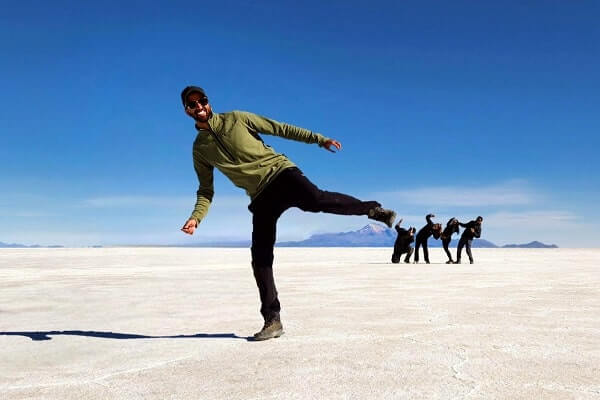Bolivia is perhaps best known as home to Salar de Uyuni – the largest salt flat on the planet. But the country features an array of diverse and dramatic landscapes from barren, high-altitude Andean peaks, to the density of the lush Amazon rainforest.
Unlike many of its neighbouring countries, tourism is underdeveloped in Bolivia. Recent political unrest has not helped the cause: a disputed 2019 election continues to impact the country’s stability, and at the time of my visit, there’s a spate of protests that prevent me from travelling further north to the larger cities of La Paz and Santa Cruz.
But the reduced accessibility comes with its positives. The country is extremely affordable, untouched, and underpinned by an innate sense of raw adventure and discovery.
Crossing the border into Bolivia
Despite the protests in central Bolivia, a few days in the country’s south is enough to experience the famous Bolivian extremes.
In the company of two friends, I enter Bolivia from San Pedro de Atacama in Chile’s far north – itself a stunning desert town that merits a visit.
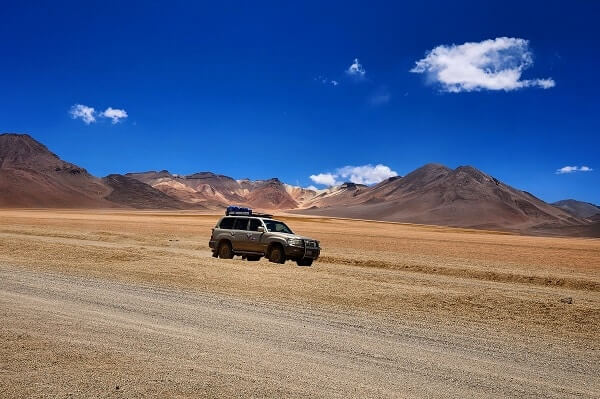
A guided tour is advisable, at least in rural Bolivia. There are no paved roads, the distance between towns is vast, and Bolivia has some of Latin America’s lowest internet penetration rates, so you won’t have the safety net of connectivity. An added challenge is the threat of altitude sickness, so we’ve also taken diuretics in preparation for the ascent.
Lakes at altitude
The terrain would be impenetrable but for our 4WDs, which take us to our first stop, Laguna Verde (Green Lake) and Laguna Blanca (White Lake); two adjacent mineral-rich salt lakes in the sprawling 7,100 square kilometre Eduardo Avaroa Andean Fauna National Reserve. Despite the harsh desert environment, it’s a serene setting, punctuated by the sharp pink of wading flamingoes against the backdrop of the towering Licancabur volcano.
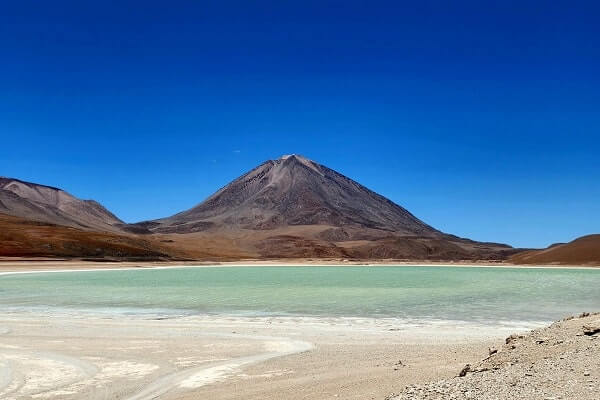
After a quick dip at the natural Termales de Polques hot springs, we arrive at the Sol de Mañana (Morning Sun) geyser field. It’s an area of intense volcanic activity, with boiling and bubbling mud pots and the distinct smell of sulphur permeating the air – all at an altitude of nearly 5,000 metres above sea level.
The final stop of the day is the Laguna Colorada (Red Lagoon). The vast salt lake is one of the most other-worldly landscapes in South America and is recognised alongside Salar de Uyuni as Bolivia’s most incredible natural wonder. Its blood-red lake – which gets its colour from red sediments and algae in the water – is less than a metre deep, but spans some 6,000 hectares, and is home to large llama and flamingo populations.
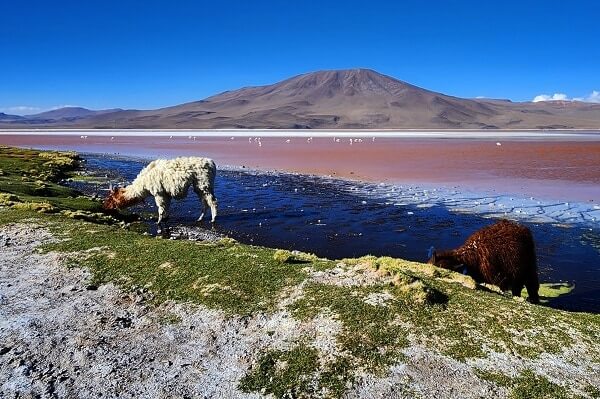
As the day draws to a close, we chew on coca leaves and drink mate de coca (coca tea) to head off mild symptoms of altitude sickness.
Rocky ravines
The next day, we visit any geologist’s dream, the Valle de las Rocas (Valley of Rocks). It’s a valley littered with unusual rock formations caused by centuries of wind erosion and volcanic activity – and many take familiar forms that the child in you can’t help but climb, including the FIFA World Cup trophy, a camel, or a giant rooster. Our guide points these out to us as we drive, a reminder of the Incas’ fondness for giving meaning to shapes in nature.
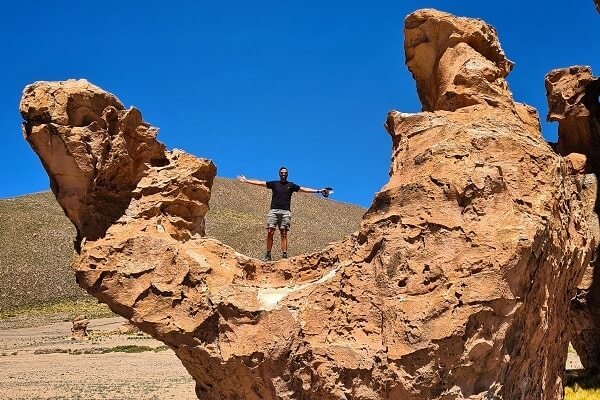
We stop briefly at a tiny, seemingly deserted town where the Germans and Australians in our group opt to sample local beers, despite the advice against consuming alcohol at altitude.
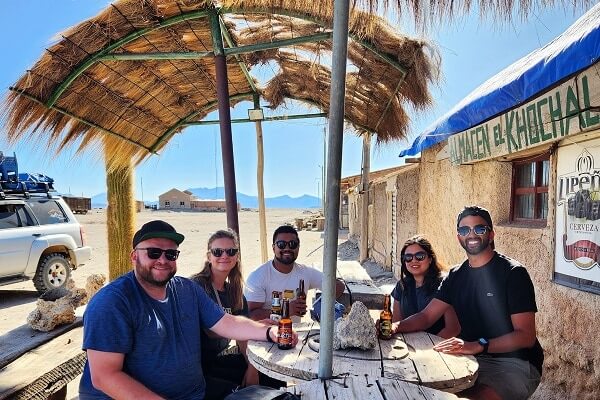
Inca Huasi and Salar de Uyuni
The next day, we set off from our salt hostel for Salar de Uyuni, where we catch the sunrise. Given the freezing temperatures, it’s not only breathtaking but very welcome when the first warm, golden rays hit the 10,500 square kilometre plain (making the salt flats only slightly smaller than the entire Sydney area).
As the sun starts beating down on us, we head to Isla Incahuasi (House of the Inca), which is easily the most surreal stop of our tour. It’s an isolated outcrop of land in the middle of the salt flat that is covered in gigantic cacti – some of which are more than 1,000 years old and tower over 10 metres tall.
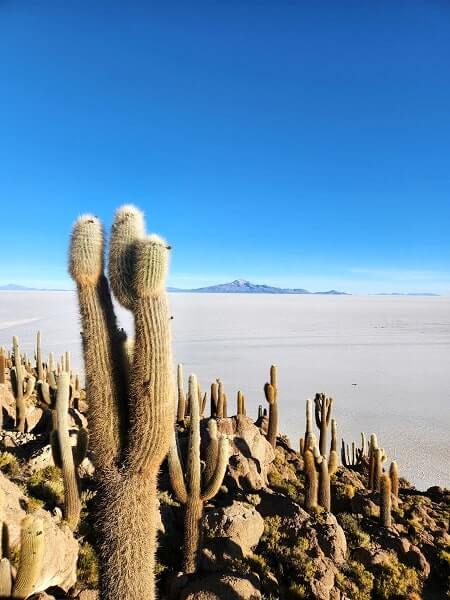
We wrap up our tour with obligatory salt flat photos, playing with perspective thanks to the seemingly endless expanse of blindingly white terrain and the reluctant horizon.
The details:
How to get there: It’s not straightforward for Australian travellers, but it’s well worth the effort. You can either enter Bolivia from San Pedro de Atacama in Chile, which is a short flight and bus ride away from Santiago, or fly to La Paz and take a tour south to Uyuni.
What to do: It’s best to use a well-reviewed local tour operator once you’ve selected your starting point – these tours are all-inclusive and English-speaking guides are available for a modest additional cost, meaning you won’t have any decisions to make.
When to go: The dry season (between May to October) is usually the best time to visit Bolivia, but it’s less crowded in the wet season (between December to April), and you’ll see more flamingos too.
The dollars and cents: An all-inclusive three-day tour of southern Bolivia costs around $400. Factor in an additional $3,000 to $4,000 for return and internal flights from Australia’s east coast.
READ ALSO: Picture-perfect Patagonia



